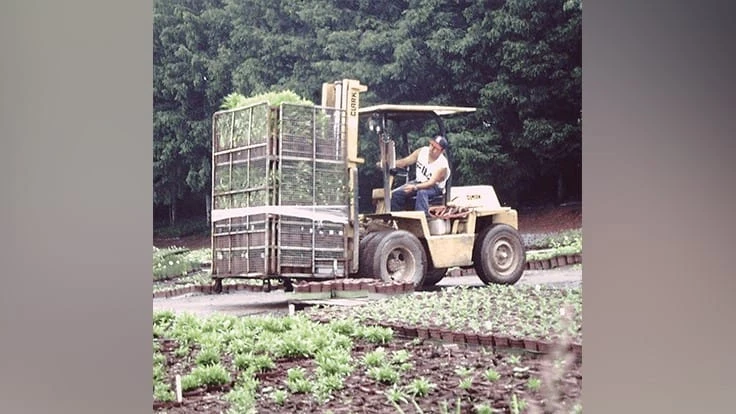

Identifying where to mechanize or automate is not an easy task. Most businesses have a limited amount of capital for mechanization and it is important to get maximum return.
A good starting point is to measure the amount of time that goes into the different operations that are performed. This can be done by having workers keep track of their time and output for the different tasks. However, one problem many growers encounter when attempting to do this is that there are a large number of tasks that are performed, and this can involve considerable record keeping. For example, in a study I did for the Horticultural Research Institute there were more than 70 different tasks associated with shipping plants from a nursery rewholesale yard.
One method that will help you find the best jobs to mechanize is to analyze each task for the following factors:
1. Repetitiveness. Tasks that are done over and over again are prime candidates for mechanization — for example, container filling, dibbling, transplanting, tagging and watering. For most of these there is a wide selection of equipment available for both large and small operations.
2. Backup in the flow of materials. This is an indication that parts of the system are operating at different rates. A review of the different tasks may require adding more help to a particular task or adjusting the rate that a machine is operating.
3. Labor input. Tasks with significant labor input are ones that should be considered first for mechanization. For example, considerable labor goes into moving plants several times during the growing process. Carts and conveyors are typical devices that can move larger quantities with only minimal labor.
4. Length of the job. The number of days that a particular task is performed can influence your decision on mechanization. Watering is a task that is done almost every day. It should be given high priority when looking at mechanization. Seeding, on the other hand, may be done only a few days during the year. Investing considerable capital into a precision seeder may not be justified.
5. Tasks requiring heavy physical activity. Workers tire quickly when the objects they move are over 50 pounds. Handling materials such as bales of growing mix, bags of fertilizer and larger containers or ball and burlap plants can be mechanized using forklifts, bucket loaders and other lifting devices.

6. Ergonomic activity. Tasks that require repetitive motion of fingers, wrists, elbows, shoulders, neck and back can result in cumulative trauma disorder (CTD) complaints and lost work time. Besides rotating employees between jobs, the use of equipment can reduce the potential for injury.
7. Employee comfort and safety. Because of the large amount of material that is handled over long distances and on wet and rough surfaces, safety for employees should be of major concern. Equipment can be employed that will reduce the risk factor and make working conditions better.
8. Tasks requiring considerable walking. This is one area where considerable savings can be made by applying equipment. Examples include carrying plants long distances, walking to locate materials and locating restroom facilities a significant distance from work areas.
9. Excessive plant injury. Manual handling of plants can often result in plant injuries like broken stems, damaged leaves, and broken flower buds. Equipment, such as carts or conveyors, may help to reduce this loss.
10. Skilled labor doing materials handling tasks. With the large variety of materials handling equipment available today, it is possible to reduce manual handling of many materials. Skilled labor should oversee the materials handling operation and keep everything operating smoothly.
11. Time constraints. The spring season and holidays are usually rush times for growers. There is always more to do that the time allows. Mechanization can help to accomplish more during these periods.
The primary objectives of the automation and mechanization of tasks should be to reduce production costs, increase output, save time and reduce physical effort.

Explore the December 2020 Issue
Check out more from this issue and find your next story to read.
Latest from Greenhouse Management
- Anthura acquires Bromelia assets from Corn. Bak in Netherlands
- Top 10 stories for National Poinsettia Day
- Langendoen Mechanical hosts open house to showcase new greenhouse build
- Conor Foy joins EHR's national sales team
- Pantone announces its 2026 Color of the Year
- Syngenta granted federal registration for Trefinti nematicide/fungicide in ornamental market
- A legacy of influence
- HILA 2025 video highlights: John Gaydos of Proven Winners





